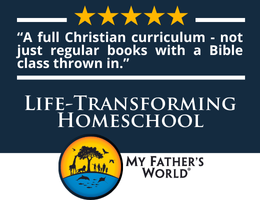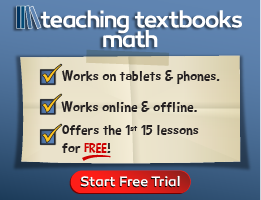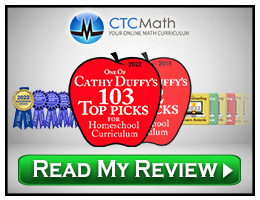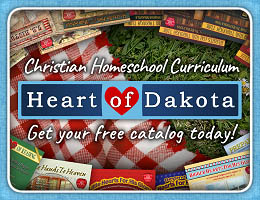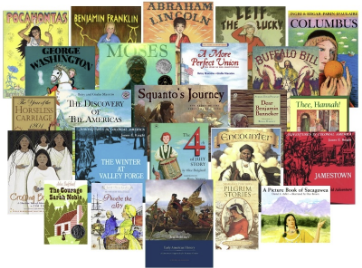Rea Berg and Rebecca Manor have created three teacher guides for a literature approach to early American history: Early American History: A Literature Approach for Primary Grades (for kindergarten through third grade), Early American History: A Literature Approach for Intermediate Grades (for grades four through six), and Early American History: A Literature Approach for Seventh through Ninth Grade. All three guides are printed in full color and include numerous illustrations. The guides are available in print or as PDFs.
These guides, published in 2020 and 2021, are up to date with coverage of Native Americans and African Americans, including stories of their ill-treatment presented at levels appropriate for each audience. For potentially problematic passages, the guides provide content warnings as well as discussion questions. There is some Christian content in the teacher guides.
Each guide has detailed lesson plans for a course that will take at least one school year to complete by reading several books, having discussions, writing answers to questions in a notebook, and doing activities. If you wish to spend more time, you can also investigate the recommended websites, follow the "Rabbit Trails" (additional books to read), or use optional activities (such as coloring or cooking historical dishes). Recipes for historical dishes are presented in the guides with full-color images and complete instructions updated for modern usage. These recipes are connected to the reading assignments, and they might be a great way to involve the whole family in discussions about what the children are learning.
Beautiful Feet Books has chosen books for each course that are likely to be available through your library, but they also sell the books for those who want to own them. For all three courses, all resources can be purchased either individually or as a package that includes the guide and all the required books. Charter School packages for each course are available, which do not include the teacher guides and omit one novel for grades seven to nine.
In each guide, the lessons are grouped into units by common themes, such as Indigenous Peoples of North America, The Golden Age of Discovery, and The Colonies. There are seven units (with 94 lessons) in Primary, six units (with 129 lessons) in Intermediate, and five units (with 82 lessons) in Seventh through Ninth Grade.
The lesson plans schedule two or three lessons per week for the primary level, three per week for the intermediate level, and two per week for grades seven through nine. Lessons have reading assignments from one or more of the required books. Students can read on their own, or parents can read the books aloud. Reading is followed by activities such as discussing the character and actions of a person, comparing a person's character with that of someone else the child has read about, drawing or writing in a notebook, working on vocabulary words, drawing maps, completing a timeline, or doing research for a report. Suggested answers are provided for the discussion questions posed in the first two guides, but questions in the third guide are more open-ended with no predictable responses, so there is no answer key for that guide.
The guides encourage parents to adapt lesson activities to suit their children. For instance, they tell parents not to require kindergartners to do the writing assignments but to gradually introduce them to older students. Also, they suggest that instead of using the specific questions supplied in the guides for discussion or writing, parents might take a Charlotte Mason approach by having children narrate (orally or in writing) their own thoughts about what they have read or heard.
Primary Level
Primary uses seven books by the D'Aulaires (such as Pocahontas, Columbus, and Abraham Lincoln) plus the books Jamestown, New World Adventure (Knight); The Discovery of the Americas (Maestro); Squanto's Journey (Bruchac); A Picture Book of Sacagawea (Adler); Pilgrim Stories (Pumphrey); Encounter (Yolen); Crossing Bok Chitto (Tingle); The Courage of Sarah Noble (Dalgliesh); Dear Benjamin Banneker (Pinkney); Phoebe the Spy (Griffin); Thee, Hannah! (de Angeli); The Year of the Horseless Carriage 1801 (Foster); A More Perfect Union (Maestro); The Fourth of July Story (Dalgliesh); Winter at Valley Forge (Knight); and Moses: When Harriett Tubman Led Her People to Freedom (Weatherford).
Many lessons in the guide for the primary level direct students to paste pictures from books by the D'Aulaires into their notebooks. These pictures are found in a free, 28-page packet of maps and coloring pages that you can download from the publisher's website.
Intermediate Level
Intermediate uses A Child's First Book of American History (Miers) as a spine book throughout the course. Along with it, the course uses many more books including such titles as The Vikings (Janeway), Hiawatha and the Peacemaker (Robertson), Pedro's Journal (Conrad), The Landing of the Pilgrims (Daugherty), The World of William Penn (Foster), Amos Fortune: Free Man (Yates), George vs. George: The American Revolution as Seen From Both Sides (Schanzer), How We Crossed the West: The Adventures of Lewis & Clark (Schanzer), The Story of Harriet Tubman (McMullan), and Lincoln: A Photobiography (Freedman).
Near the beginning of each of the six units, this guide has call-out boxes titled "Character Connections" that highlight positive character traits from a biblical perspective. For instance, on page 39, the character trait (or virtue) is patience. It lists eight scripture references for students to look up. Then they are to discuss the verses and how they relate to patience. Next, it tells students to look for examples of patience in the stories they will read in the unit. It poses a few different ways that students might think about this with questions, such as: "What happens when someone lacks patience?"
A free, downloadable packet of maps and images can be used along with the lessons. Students will do some map work, and they will cut and paste images into their notebooks. Many of these images are of wildlife.
The Early American History Timeline from Beautiful Feet Books is also included in the pack for the intermediate level. While the timeline is designed for the intermediate level, parents who think their children will benefit from it might also use it at the primary level.
Seventh through Ninth Grade
 The books required for this course take more time to read than in previous levels, and students will do more research and writing. The required books are The World Made New (Aronson and Glenn); two by Joseph Bruhac: Peacemaker and Pocahontas; three by Genevieve Foster: The World of Capt. John Smith, George Washington’s World, and Abraham Lincoln’s World; two by James Daugherty: Poor Richard and Of Courage Undaunted; Almost Home (Lawton); The Kidnapped Prince: The Life of Olaudah Equiano (Equiano); Sophie’s War (Avi); Black Heroes of the American Revolution (Davis); Fever 1793 (Anderson); Carry On, Mr. Bowditch (Latham); Mary and the Trail of Tears, A Cherokee Removal Survival Story ( Rogers); and Sojourner Truth: Ain’t I a Woman? (McKissack and McKissack).
The books required for this course take more time to read than in previous levels, and students will do more research and writing. The required books are The World Made New (Aronson and Glenn); two by Joseph Bruhac: Peacemaker and Pocahontas; three by Genevieve Foster: The World of Capt. John Smith, George Washington’s World, and Abraham Lincoln’s World; two by James Daugherty: Poor Richard and Of Courage Undaunted; Almost Home (Lawton); The Kidnapped Prince: The Life of Olaudah Equiano (Equiano); Sophie’s War (Avi); Black Heroes of the American Revolution (Davis); Fever 1793 (Anderson); Carry On, Mr. Bowditch (Latham); Mary and the Trail of Tears, A Cherokee Removal Survival Story ( Rogers); and Sojourner Truth: Ain’t I a Woman? (McKissack and McKissack).
The books for this course are all well over 100 pages long. Some students might struggle with the amount of reading, and parents should drop some books if necessary. On the other hand, Rabbit Trails suggest additional reading for those who have the time and interest.
At this level, students research and read about various viewpoints and arrive at their own conclusions. Many curated websites are listed in the guide. Students write a research paper for each of the five sections. Optional creative writing prompts are also included in each section. Character Connections, like those in the Intermediate guide, are included.
Students also need a large outline map of North America on which they can draw and write. The course bundle sold by Beautiful Feet Books includes a map, the guide, and all 16 books.
Summary
The amount of reading might be daunting, but I encourage parents to adapt the courses to the needs of their children and use at least some of the supplemental resources so they can enjoy the learning process with their children.

